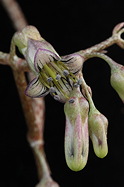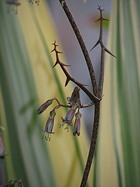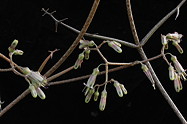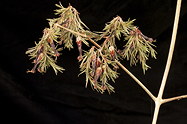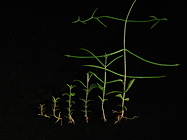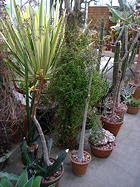One of only a few climbing species in this genus, this one clings to supporting vegetation by means of its grappling-hook-like, pinnately divided mature leaves. Juvenile leaves vary in shape but are often broader and therefore more effective photosynthetic structures to nourish young plants. In any case, this plant seems to have no trouble ensuring its survival as any small piece seems capable of rooting and starting anew. Energy is so successfully allocated to vegetative growth that flowers are rarely seen. I waited for several years to flower our specimen in the Desert Conservatory. Frequent prunings are necessary to restrict the ascendant vines to the trunk of a Pachypodium geayi that serves as a trellis. This regimen apparently encouraged more vegetative growth. One longer stem made its way to a neighboring Pachypodium and escaped my notice until it finally came into full bud in the winter of 2012. The pale lavender flowers, ornamented with purple-black lines, were worth the wait. As the flowers faded, numerous linear-bracted bulbils, unlike those of any of the other “mothers of thousands”, formed to ensure further propagation. Long cultivated, but only occasionally, we are pleased to offer a documented collection: trios of cuttings of HBG 118288, a plant collected Jan 15, 2002, by David Hearn & Rolland Ranaivojaona, at Andramobe, en route to Andringitra, near the Anja Reserve, Madagascar. $10.
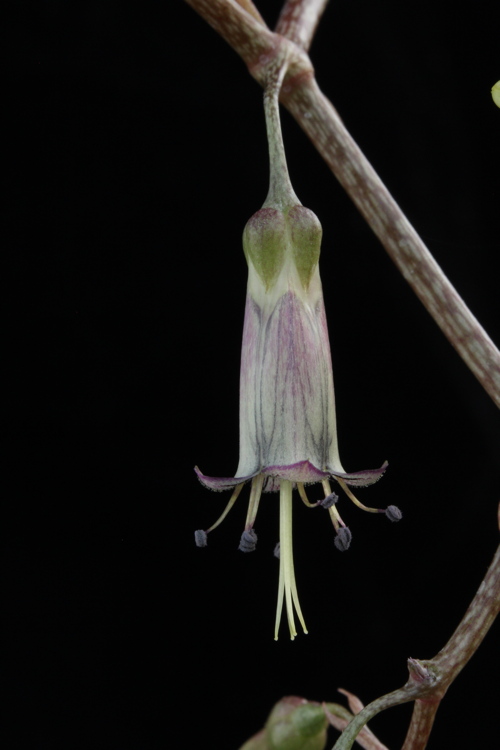
Published in the Cactus and Succulent Journal, Vol. 85 (2), March - April, 2013

